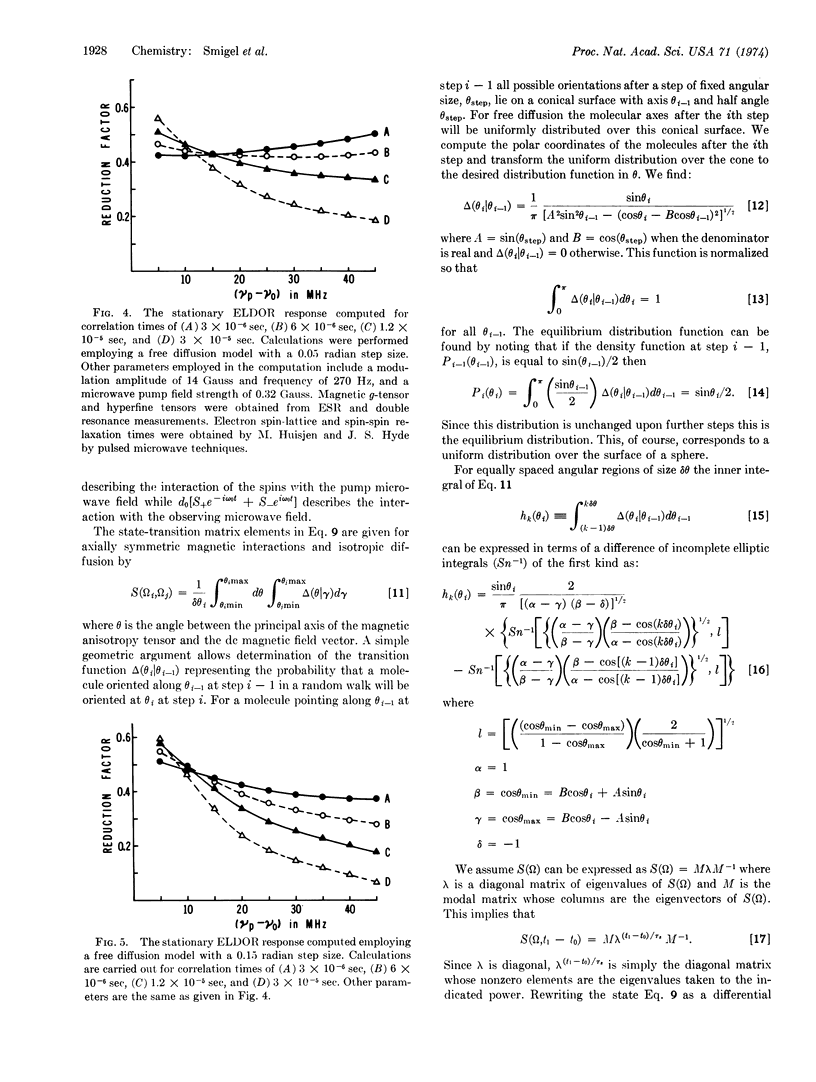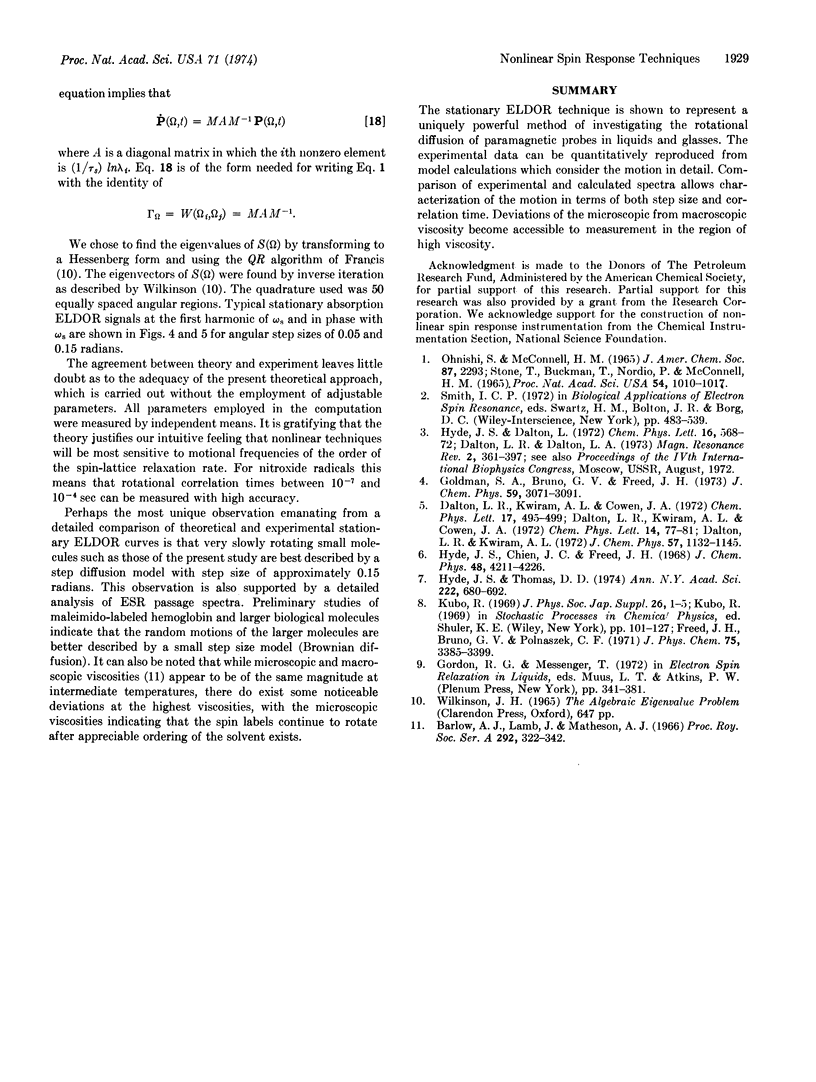Abstract
The investigation of very slowly tumbling spin labels by nonlinear electron spin response techniques is discussed. Such techniques permit characterization of rotational processes with correlation times from 10-3 to 10-7 sec even though the linear spin response (ESR) technique is insensitive to motion in this region. Nonlinear techniques fall into two categories: (a) Techniques (referred to as passage techniques) in which the distribution of saturation throughout the spin system is determined both by the applied magnetic field modulation of the resonance condition and by the modulation of the resonance frequency induced by the molecular motion. The time dependence of this distribution produces phase and amplitude changes in the observed signals. (b) Techniques that measure the integral of the distribution function of the time required for saturated spin packets to move between pumped and observed portions of the spectrum [stationary and pulsed electron electron double resonance (ELDOR) techniques]. Quantitative analysis of passage ESR and stationary ELDOR techniques can be accomplished employing a density matrix treatment that explicitly includes the interaction of the spins with applied radiation and modulation fields. The effect of molecular motion inducing a random modulation of the anisotropic spin interactions can be calculated by describing the motion by the diffusion equation appropriate to the motional model assumed. For infinitesimal steps the eigen-functions of the diffusion operator are known analytically, while for random motion of arbitrary step size they are determined by diagonalizing the transition matrix appropriate for the step model used. The present communication reports investigation of the rotational diffusion of the spin label probes 2,2,6,6-tetramethyl-4-piperidinol-1-oxyl and 17β-hydroxy-4′,4′-dimethylspiro-[5α-androstane-3,2′-oxazolidin]-3′-oxyl in sec-butylbenzene. Experimental spectra are compared with computer simulations of spectra carried out for isotropic Brownian (limit of infinitesimal step size) and free diffusion (arbitrary step size) models.
Keywords: isotropic rotational diffusion, free diffusion, adiabatic rapid passage, passage electron double resonance
Full text
PDF




Selected References
These references are in PubMed. This may not be the complete list of references from this article.
- Hyde J. S., Thomas D. D. New EPR methods for the study of very slow motion: application to spin-labeled hemoglobin. Ann N Y Acad Sci. 1973 Dec 31;222:680–692. doi: 10.1111/j.1749-6632.1973.tb15295.x. [DOI] [PubMed] [Google Scholar]
- OHNISHI S. I., MCCONNELL H. M. INTERACTION OF THE RADICAL ION OF CHLORPROMAZINE WITH DEOXYRIBONUCLEIC ACID. J Am Chem Soc. 1965 May 20;87:2293–2293. doi: 10.1021/ja01088a040. [DOI] [PubMed] [Google Scholar]


